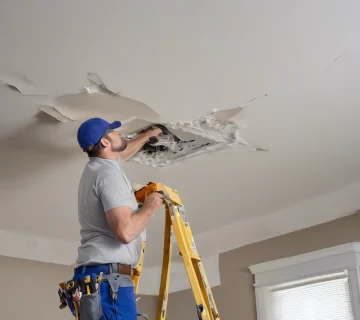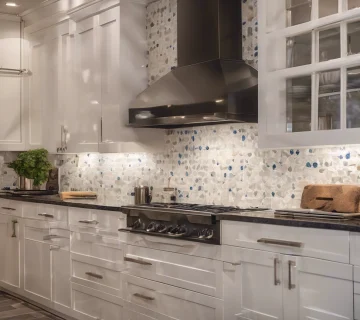Drywall Repair: Why It Matters and How to Do It Right
If you live in Ottawa or anywhere else, you know drywall takes a beating. Over time, it gets cracked, dinged, or even busted wide open. That’s just how homes live and breathe. As a guy who’s been swinging a hammer for years, let me tell you — drywall repair isn’t just patching holes. It’s about keeping your home strong, clean, and looking its best.
Let’s break it down nice and simple.
Why Drywall Repair Matters More Than You Think
Some folks see a crack and think, “Ah, it’s no big deal.”
But small problems turn into big headaches if you ignore them.
Tiny cracks can grow with Ottawa’s freeze-thaw cycles.
Moisture can sneak in and cause mold behind the wall.
Loose drywall can mess with your home’s insulation.
A smooth, solid wall isn’t just about looks — it’s about protecting your home from bigger damage down the line.
Common Drywall Problems You’ll See
If you’re a homeowner, you’ve probably seen one (or all) of these:
Nail Pops: Little bumps where nails have pushed through.
Stress Cracks: Usually near windows, doors, or ceilings.
Water Damage: Stains, bubbles, or sagging drywall.
Holes: From moving furniture, accidents, or roughhousing kids.
Each type of damage needs the right kind of drywall repair to fix it properly.
Tools and Materials You Need for Drywall Repair
Before you start swinging tools around, make sure you’re set up right.
Here’s your basic kit:
Joint compound (the mud)
Putty knife
Sanding block
Drywall tape (paper or mesh)
Utility knife
Drywall patches (for big holes)
Primer and matching paint
Having the right stuff makes the job a whole lot easier and cleaner.
Step-By-Step: How to Fix Common Drywall Issues
Small Cracks and Nail Pops
Use your knife to dig out loose material.
Apply a thin layer of joint compound.
Let it dry, then sand it smooth.
Repeat once or twice until flush with the wall.
Prime and paint.
Tip: Always feather the edges wider than you think. Makes it disappear when you paint.
Bigger Holes (Fist-Sized or Larger)
Cut the hole into a neat square or rectangle.
Cut a drywall patch slightly bigger.
Screw a wood brace inside the wall to hold the patch.
Attach the patch to the brace.
Tape the seams, mud over it, feather it wide.
Sand, prime, and paint.
Tip: Don’t rush drying times. Trying to mud and sand too fast just makes a bigger mess.
When It’s Time to Call a Pro
Now, I’m all for DIY. But if you’ve got:
Serious water damage
Cracks bigger than a quarter inch
Structural issues or sagging ceilings
…then it’s time to call in a professional for drywall repair. Some jobs are too risky or complicated for a patch job.
Pros have the gear, the experience, and know all the tricks to get your walls back to brand-new shape without headaches.
Keep Your Walls in Top Shape
Regular touch-ups and quick repairs save you big down the line.
Especially with Ottawa’s crazy seasons beating on your house.
Good drywall repair keeps your home feeling solid, warm, and welcoming.
Remember:
Fix the small stuff before it becomes big stuff.
And when in doubt — get help from folks who fix drywall day in, day out.
Final Thoughts
Your walls tell a story. They show the life lived inside a home.
Scratches, dings, cracks — they all happen. But staying on top of drywall repair keeps your home looking and feeling its best.
Whether you do it yourself or call in a pro, a little work now saves a lot of trouble later.
Keep your home strong. Keep it beautiful. And keep that drywall tight, clean, and ready for the next season of life.



